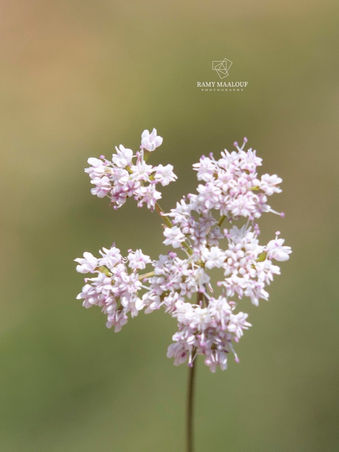Family |
Apiaceae
Bunium elegans
(Fenzl) Freyn
Bunium elegans (Fenzl) Freyn
(Nouvelle Flore du Liban et de la Syrie, vol. 2, Pl. CCXCIII nº 2; 1983)
Life-form & habit: Perennial with a globular root. Stem cylindrical, either highly branched from the base or branched only in the upper part, 20–60 cm tall.
Leaves: Lower leaves long-petiolate, with a broadly ovate-triangular outline, 2–3 times pinnatisect into short, divergent, linear lobes.
Inflorescence & flowers: Umbels with (3–4)5–10(12) rays. Bracts of both involucre and involucel short, lanceolate-subulate with white margins. Petals white or pale pink, scarcely or weakly radiating.
Fruit: Initially subcylindrical, becoming oblong and rounded at both ends at maturity, borne on pedicels often slightly longer than the fruit, occasionally 2–3 times longer.
Styles: Long, flexuous, reflexed, clearly longer than the stylopodium. Valleculae each with a single oil canal.
Phenology: Flowers from April to August.
Habitat & elevation: Wooded and mountainous areas, especially inland.
Lebanese distribution: Mi. Sir-ed-Denniyé, E. of Douma, Rayfoun; Mm. Sofar, Berkacha, Ehden, Hasroun, Cedars of Hadeth, Dahr-el-Baïdar, Jabal Qamou‘a, Cedars of Bsharré, Afqa, Sannine, Kneissé; Ve. Khan Mourad; Me. High Sannine.
Syrian distribution: Yaat, Masna‘a; Herm. Hermon, Hasbaya.
Native range: Turkey, Syria, Lebanon, Iraq, Iran, Transcaucasia





